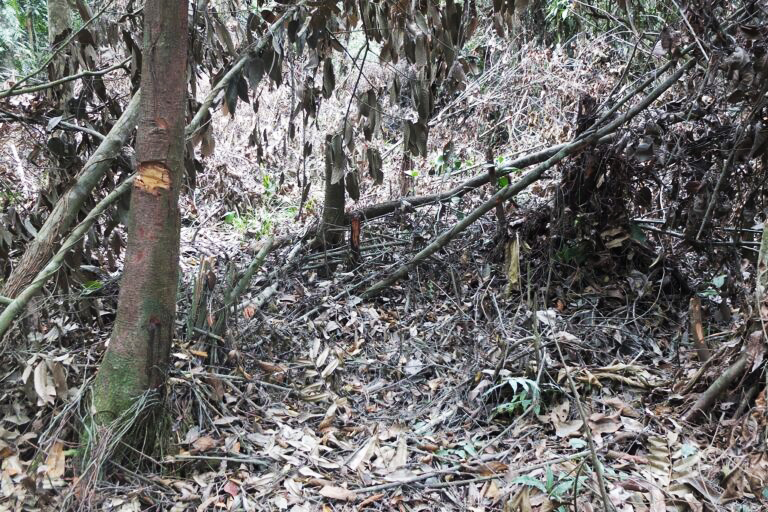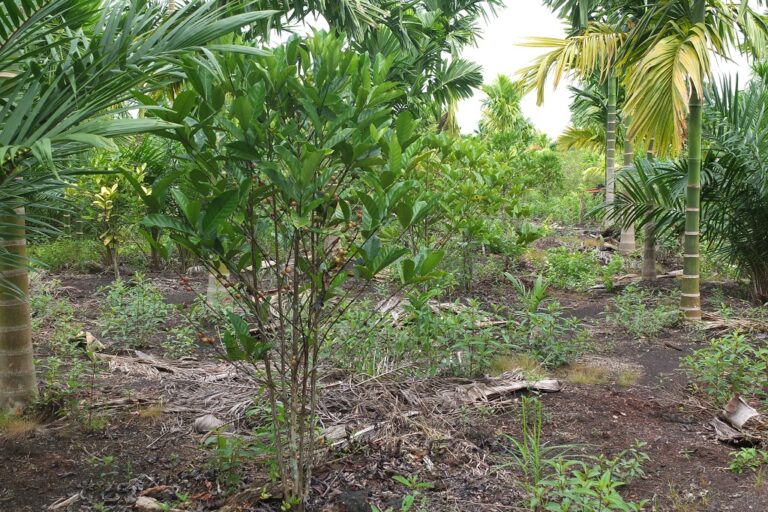- A community in Indonesia’s Jambi province has resorted to fish farming to raise money for its efforts to prevent wildfires in the community.
- In 2015, around 80% of the province’s peat forest was damaged during the Southeast Asia wildfire crisis.
- Jambi-based nonprofit KKI Warsi cites the number of peatland canals as the greatest barrier to replenishing the wetland.
MENDAHARA ULU, Indonesia — At the end of 2018, three communities in this subdistrict on the island of Sumatra were given rights to manage their local peatland by Indonesian President Joko Widodo, who showed up in person to present the certificate. Suryani still has the photo of the handover by Jokowi, as he is known, displayed in his home.
“It was a moment of real pride for our village because the community-forest decree was handed over directly by Pak Jokowi,” said Suryani, who leads the forest management collective in Pematang Rahim village in Sumatra’s Jambi province.
According to the Warsi Indonesian Conservation Community (KKI), an environmental group based in Jambi, the productive land around Suryani’s village used to be community rice fields, until plantation companies assumed control of the peatland in the 1990s. Peat covers just 3% of the world’s land surface, but peatlands store more carbon than all other land vegetation combined, according to the IUCN.

During the 2015 Southeast Asia wildfire crisis, 80% of Jambi’s 900,000 hectares (2.2 million acres) of peatland were damaged by wildfires, according to Pantau Gambut, a Jakarta-based nonprofit.
The catastrophe emitted a vast cloud of carbon emissions and blanketed homes in air pollution, causing long-term harms that remain poorly understood. Environmental groups attribute that to the plantation industry practice of digging canals to drain water off the peatland for growing monocultures.
“The main problem with the peatlands in Jambi is that there are too many canals,” said Ade Chandra, program coordinator at KKI Warsi.
However, since the government devolved management of 12,766 hectares (31,545 acres) of peatland to Suryani in Pematang Rahim and colleagues from two other villages — Sinarwajo and Sungai Beras — local people are sparking new changes to fireproof their peat.
With new agency over their land, Suryani and other volunteers are conducting patrols to check for fires, maintain hydration of the peatland, and ward off loggers, a group of whom dug 1,300 meters (4,300 feet) of canals to transport lumber cut illegally from the forest.
Suryani’s goal is to safeguard his patch of peat in Indonesia, but a lack of cash is limiting what the Pematang Rahim volunteers can do.

Neighborhood watch
Shortly after his election as president in 2014, Jokowi committed to devolve almost 13 million hectares (32 million acres) of land from the national forest estate for management by communities. Research shows that communities that have a direct stake in land administer their landscape with greater care.
Suryani and others from Pematang Rahim got together and wrote a management plan, covering strategy to protect the peatland, sustainably harvest nontimber forest products, and strengthen their nascent forestry institution. The government approved their plan and handed management rights to the community for a 10-year period.
However, the case in Pematang Rahim suggests a lack of funding may be hampering the potential of Indonesia’s new forest stewards.
“Our activities are very limited because we do not have our own funds,” Suryani said.
In Sinarwajo, another of the three villages co-managing the 12,766-hectare peatland, similar challenges are undermining capacity to forge greater change.
“We don’t have the funds,” said Samsu Alam, who leads the forestry collective there. “I have applied for the use of village funds to manage the village forest, but the village government did not approve it.”
Samsu knows better than most the importance of increasing the resilience of the land around Sinarwajo: in 2015 about 1,400 hectares (3,500 acres) of land here burned to cinders. In the aftermath of the fires, in 2018, the community planted this land with areca nut and liberica coffee trees.

There’s evidence that some village chiefs are increasingly allocating transfers they receive from the central government to wildfire prevention efforts.
The village forestry organization in Pematang Rahim has petitioned the elected village chief to support forest protection efforts with funds from the village budget, but the chief sees the spending request as a low priority.
In response, the Pematang Rahim forestry collective has taken matters into its own hands. To help raise the funds needed to realize its aims, the community has begun breeding freshwater fish.
“We chose toman because this fish is more resilient than other types of fish,” said Syamsudin, who is working to breed the toman, or giant mudfish (Channa micropeltes).
“This fish lives in the rivers with peat water, like we have here,” he added.
The mudfish can fetch the equivalent of more than $2 per kilogram ($1 per pound), which can be poured into the village’s land-management budget, but Syamsudin said he worries over the viability of the scheme as fish feed becomes more difficult to obtain.
Indonesia accounts for more than a third of the world’s tropical peat, and the challenges facing its damaged peatlands are complex, requiring decades of painstaking work from people like Suryani, researchers say.
“If peatlands have been degraded, it needs a rehabilitation process that takes 30 to 50 years to be said to be successful,” said Richard Napitupulu, a forestry lecturer at the University of Jambi.
Banner image: A stream in a forest in Jambi. Image by Junaidi Hanafiah for Mongabay Indonesia.
This story was reported by Mongabay’s Indonesia team and first published here on our Indonesian site on July 16, 2023.
Sulawesi sea nomads who inspired Avatar movie chart new course saving forests
FEEDBACK: Use this form to send a message to the author of this post. If you want to post a public comment, you can do that at the bottom of the page.
